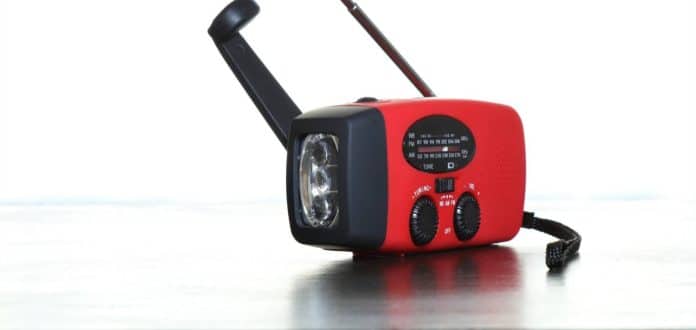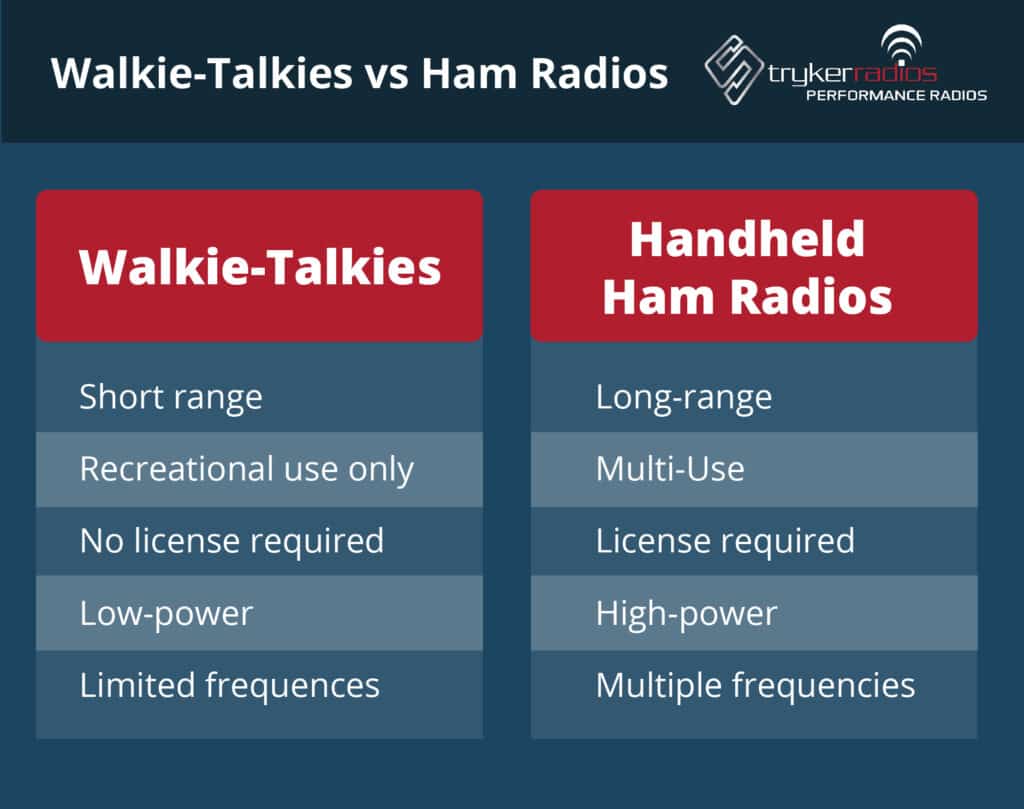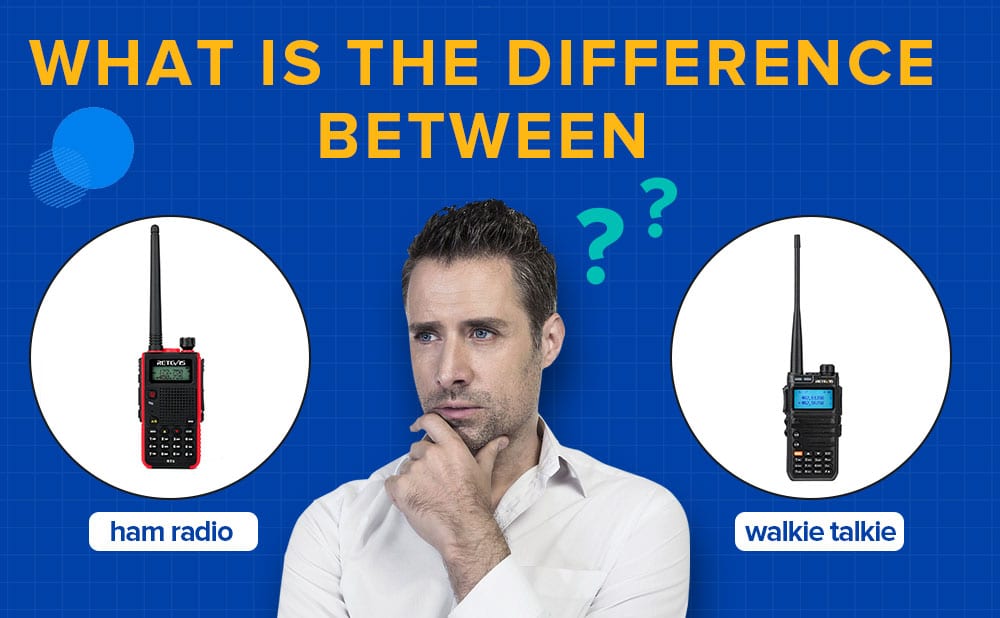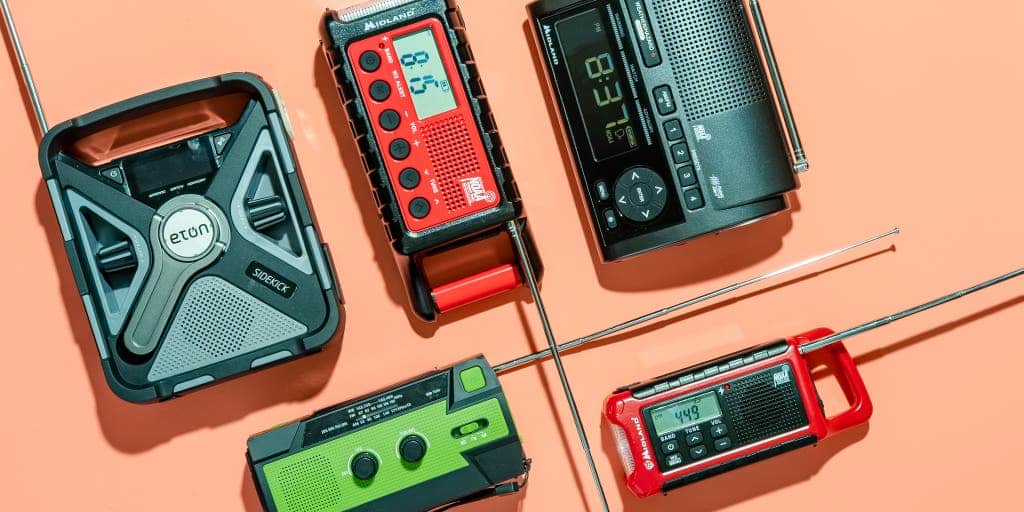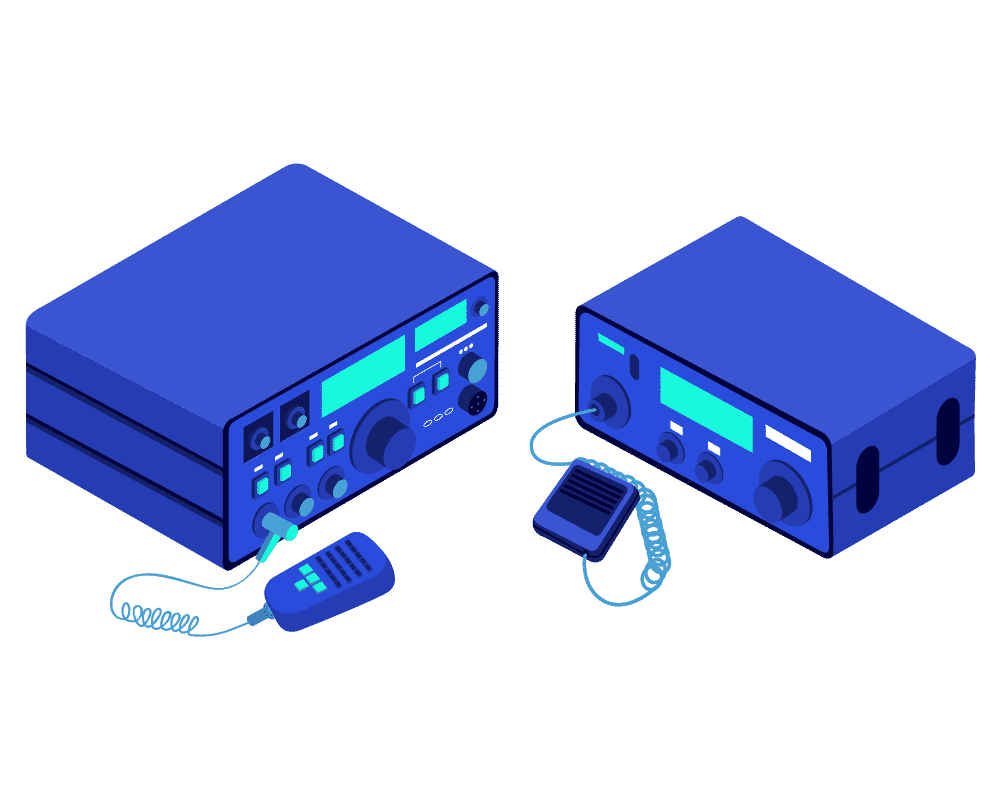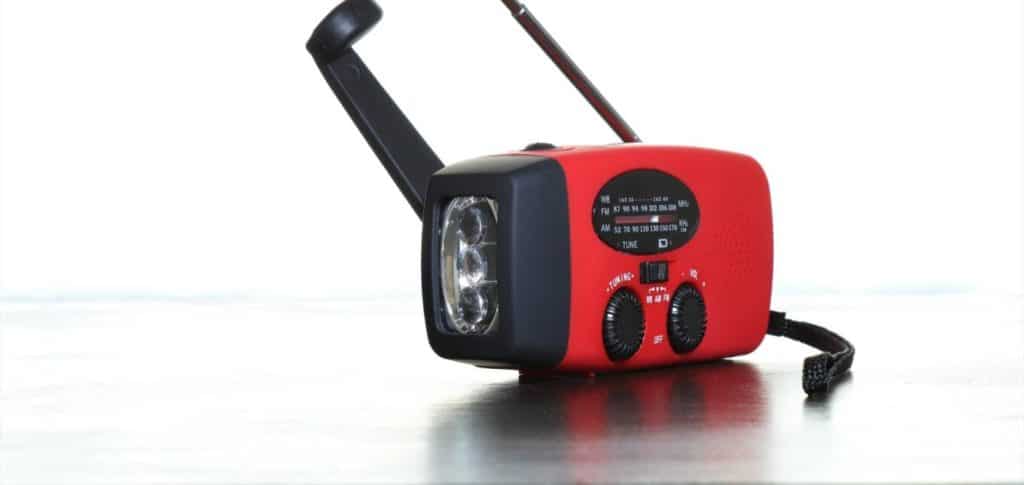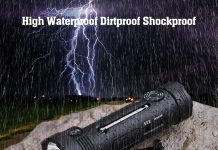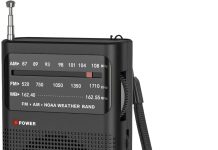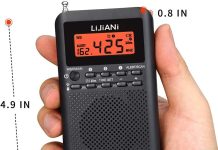Have you ever wondered about the distinction between a weather radio and a HAM radio? While both are communication devices, they serve completely different purposes. A weather radio is designed primarily for receiving alerts and updates about weather conditions, including severe weather warnings, while a HAM radio, also known as an amateur radio, allows individuals to communicate with others around the world using a wide range of frequencies. Join us as we explore the fascinating differences between these two types of radios and discover how they each play a unique role in our lives.
Review contents
Overview
Definition of Weather Radio
A weather radio, also known as a NOAA Weather Radio, is a specialized radio receiver that is designed to receive broadcasts from the National Oceanic and Atmospheric Administration (NOAA). These radios provide continuous weather information, alerts, and warnings issued by the National Weather Service (NWS). Weather radios are crucial in keeping individuals informed about severe weather conditions, such as tornadoes, hurricanes, floods, and other hazardous events.
Definition of HAM Radio
HAM radio, also known as amateur radio, refers to a non-commercial radio communication service primarily used by hobbyists, enthusiasts, and emergency communications operators. Unlike weather radios, HAM radios offer a broader range of communication capabilities, allowing individuals to engage in two-way communication with other amateur radio operators worldwide. HAM radio operators can connect with one another, experiment with different frequencies, and participate in emergency communications during times of crisis.
Purpose
Weather Radio Purpose
The primary purpose of a weather radio is to provide individuals with crucial weather information and alerts during severe weather conditions. These radios are specifically designed to receive broadcasts from NOAA and the NWS, ensuring that users stay updated and informed about potentially dangerous weather situations. Weather radios play a vital role in promoting public safety by helping users make informed decisions regarding their safety and well-being during hazardous weather events.
HAM Radio Purpose
While weather radios focus on weather updates, HAM radios serve a broader purpose. HAM radio operators enjoy a wide range of activities, including communication with fellow enthusiasts, participating in contests, experimenting with radio technology, and providing emergency communications during times of crisis. The purpose of HAM radios extends beyond weather updates and enables individuals to explore various aspects of radio communication while making valuable contributions to their communities.
This image is property of strykerradios.com.
Transmission Range
Weather Radio Transmission Range
Weather radios generally have a limited transmission range. They typically operate on Very High Frequency (VHF) bands, which can travel up to 25 to 50 miles, depending on geographical factors and the strength of the signal. The transmission range of these radios ensures that individuals located within a specific area receive reliable weather updates and alerts that are relevant to their immediate surroundings.
HAM Radio Transmission Range
The transmission range of HAM radios can vary significantly depending on factors such as power output, antenna setup, and atmospheric conditions. HAM radio operators have access to multiple frequency bands, including VHF, Ultra High Frequency (UHF), High Frequency (HF), and more. This breadth of frequency options allows HAM radios to achieve extensive transmission ranges, ranging from local connections to worldwide communication capabilities with the use of repeaters and other techniques.
Frequency Bands
Weather Radio Frequency Bands
Weather radios primarily operate on the VHF frequency band, specifically in the 162.400 to 162.550 MHz range. This frequency band is reserved exclusively for weather radio transmissions and is widely used across the United States. By utilizing the VHF frequency band, weather radios ensure reliable reception and efficient dissemination of crucial weather information to users within the coverage area.
HAM Radio Frequency Bands
HAM radios have access to a wide range of frequency bands allocated for amateur radio use. These bands include VHF, UHF, HF, and other higher frequency ranges. Each frequency band offers distinct propagation characteristics and communication possibilities. HAM radio operators can choose the appropriate frequency band based on their communication needs, the distances they wish to cover, and the propagation conditions at a given time.
This image is property of www.retevis.com.
Use by Emergency Responders
Weather Radio Use by Emergency Responders
Emergency responders, such as firefighters, police officers, and emergency medical services, rely on weather radios to receive critical weather updates and alerts during their operations. These radios ensure that emergency personnel are aware of developing weather conditions that may impact their ability to perform their duties safely. Weather radios provide emergency responders with real-time information, allowing them to make informed decisions and take appropriate actions to protect themselves and the communities they serve.
HAM Radio Use by Emergency Responders
HAM radios are also utilized by emergency responders, especially in situations where traditional communication infrastructure may be compromised or unavailable. During natural disasters, emergencies, or other crisis situations, HAM radio operators can provide reliable communication channels for emergency responders. HAM radio networks often establish emergency communication systems to coordinate response efforts, disseminate crucial information, and provide backup communication when traditional means are overloaded or inoperable.
Power Sources
Weather Radio Power Sources
Weather radios commonly operate on a combination of battery power and AC power. Most weather radios are equipped with an internal rechargeable battery that can be charged through an AC wall adapter. This ensures that the radio remains powered during normal conditions and provides backup power in the event of a power outage. Additionally, weather radios often have the option to operate on replaceable batteries, offering flexibility for users during extended periods without access to electricity.
HAM Radio Power Sources
HAM radios have similar power source options as weather radios. They can be powered via AC wall adapters or external power supplies. HAM radio operators often use more versatile setups, including portable power solutions such as rechargeable batteries, solar panels, or generators. These alternative power sources enable HAM radio operators to maintain communication capabilities during outdoor activities, emergencies, or situations where electricity may not be readily available.
This image is property of cdn.thewirecutter.com.
Licensing
Weather Radio Licensing
Weather radios do not require licensing for usage. These radios are designed to receive broadcasts from NOAA and the NWS, and users can freely purchase and operate them without the need for any specific licenses. The aim of weather radios is to provide critical weather information to the general public, and their licensing-free nature ensures accessibility for all individuals who seek timely and reliable weather updates.
HAM Radio Licensing
Operating a HAM radio requires obtaining an amateur radio license from the appropriate regulatory authority in each country. Licenses are issued after passing a series of examinations that evaluate an individual’s knowledge of radio operation, regulations, and ethics. Licensing helps ensure that HAM radio operators possess the necessary skills and understanding to operate their radios responsibly, efficiently, and within the legal boundaries set by regulatory bodies.
Equipment Requirements
Weather Radio Equipment Requirements
Weather radios are designed to be user-friendly and require minimal equipment. To operate a weather radio, users only need the radio receiver itself, which is typically equipped with an antenna to receive signals. The most important aspect of using a weather radio is ensuring that it is correctly programmed with the appropriate NOAA weather radio station codes to receive alerts and updates specific to the user’s location.
HAM Radio Equipment Requirements
HAM radio operators have more extensive equipment requirements compared to weather radios. In addition to the radio transmitter and receiver, HAM operators need antennas, transmission lines, and possibly additional equipment for specialized communication modes. The specific equipment requirements depend on the operator’s chosen frequency bands, communication goals, and technical preferences. HAM radio operators can customize their setup to accommodate their specific needs and interests within the amateur radio hobby.
This image is property of hamradioprep.com.
Usage Restrictions
Weather Radio Usage Restrictions
Weather radios do not have significant usage restrictions. They are widely accessible to the public and can be used by anyone who wishes to receive weather updates and alerts. However, it is essential to remember that weather radios are specifically designed for receiving broadcasts from NOAA and the NWS. Using weather radios for other purposes, such as general two-way communication, would be outside the intended use and may not yield desirable results.
HAM Radio Usage Restrictions
HAM radios have certain usage restrictions to ensure responsible operation and adherence to regulatory guidelines. These restrictions aim to maintain an orderly and interference-free communication environment for HAM radio operators and other radio users. HAM radio operators must familiarize themselves with their country’s specific regulations, including frequency usage limitations, power restrictions, operating hours, and proper radio etiquette to maintain harmonious communications within the amateur radio community.
Community Engagement
Weather Radio Community Engagement
Weather radios play a significant role in community engagement by providing essential weather information to individuals and communities. These radios give users the ability to stay informed and prepared for potential weather hazards, fostering a sense of community readiness. Weather radio alerts encourage community members to take appropriate actions, such as seeking shelter during severe weather events, and promote a culture of safety and preparedness within neighborhoods and regions.
HAM Radio Community Engagement
The HAM radio community engages in various activities that extend beyond traditional radio communication. HAM operators often participate in events such as radio contests, emergency preparedness drills, and community service programs. Through these activities, HAM radio operators contribute to the development of communication skills, community resilience, and public service. The HAM radio community fosters a sense of camaraderie and collaboration among radio enthusiasts, providing opportunities for social interaction, knowledge sharing, and making meaningful connections with people from all walks of life.
In summary, weather radios and HAM radios serve different purposes, offer varying transmission ranges, and operate on different frequency bands. While weather radios specialize in providing weather updates and alerts, HAM radios allow for broader communication capabilities and engagement within the amateur radio community. Understanding the differences between these two types of radios can help individuals choose the appropriate device for their needs, whether it be staying informed about weather conditions or exploring the world of amateur radio communication. Regardless of which radio one chooses, both weather radios and HAM radios contribute to public safety, emergency communications, and fostering vibrant communities of individuals passionate about radio technology.
This image is property of ogden_images.s3.amazonaws.com.

